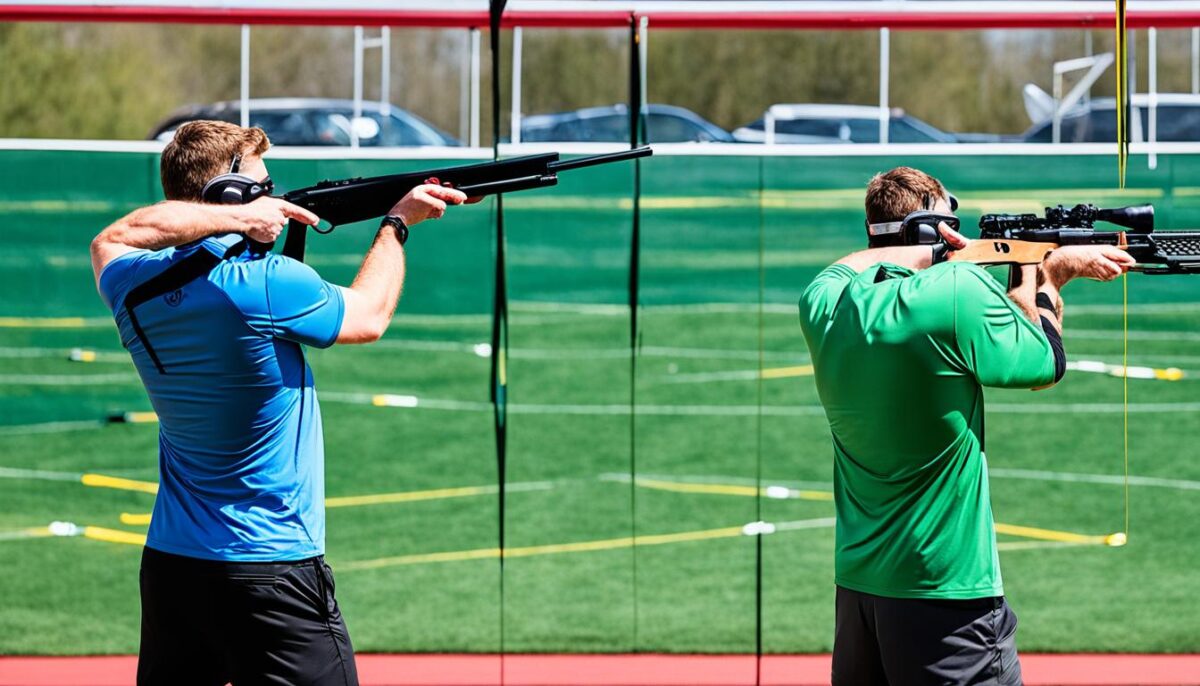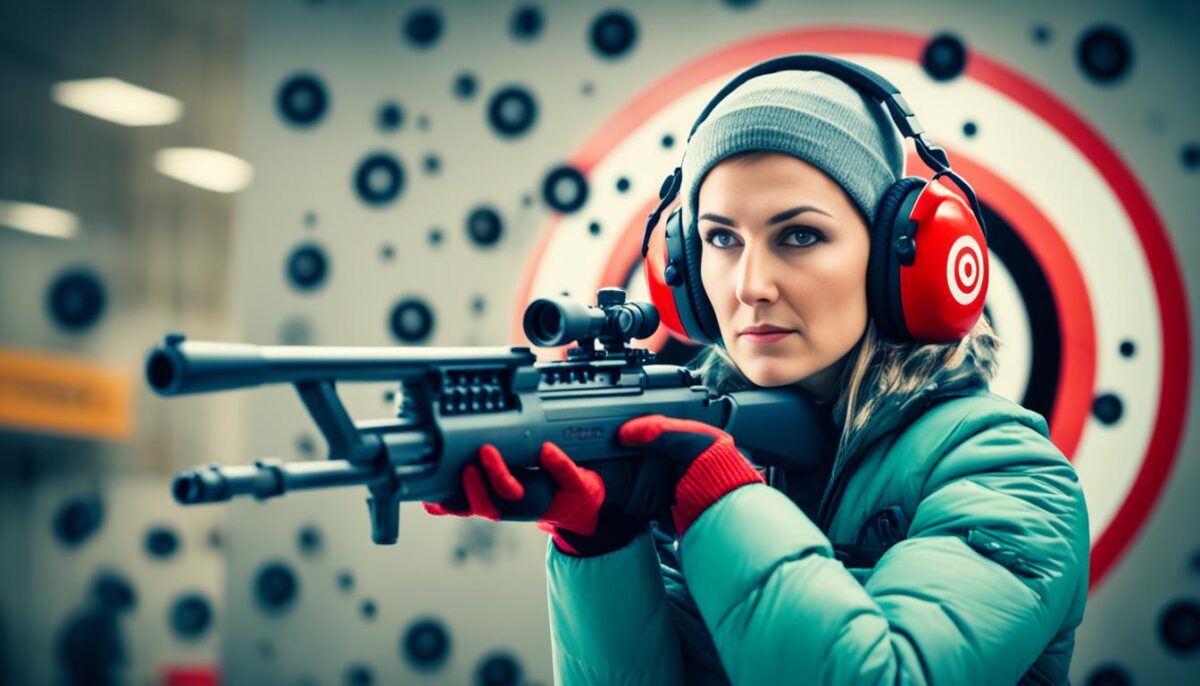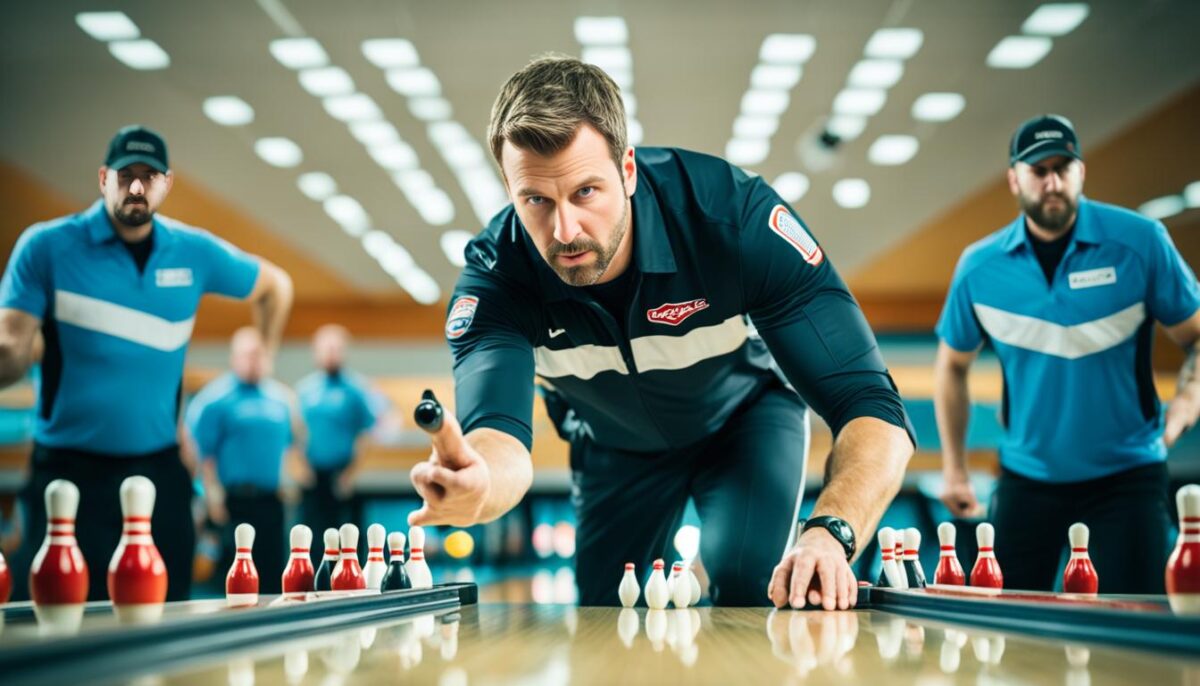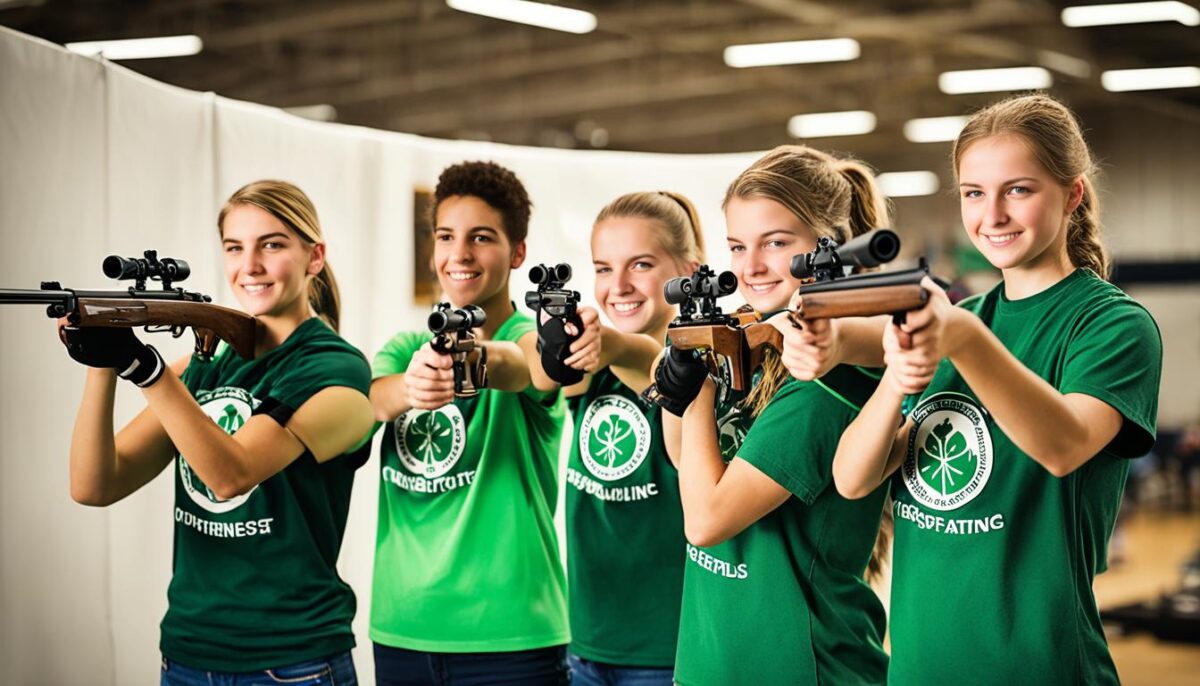When it comes to shooting sports, noise reduction is a crucial aspect that often goes overlooked. The loud sounds produced by firearms can have a significant impact on your hearing health if proper precautions are not taken. Whether you’re a professional shooter or simply enjoy the sport as a hobby, protecting your ears should be a top priority.
In this article, we will explore the importance of noise reduction in shooting sports and how it can help safeguard your hearing. We will also discuss the ideal level of noise reduction needed to enjoy shooting sports safely. So, if you’re ready to dive into the world of hearing protection, let’s get started!
Understanding the Impact of Noise in Shooting Sports
When participating in shooting sports, it’s important to be aware of the potential dangers associated with high noise levels. The loud bangs and cracks that accompany shooting can have a significant impact on your hearing if proper precautions are not taken. Understanding the risks and knowing how to protect your hearing is crucial for enjoying shooting sports safely and avoiding long-term hearing loss.
Exposure to loud noises, such as those experienced in shooting sports, can cause damage to the delicate structures of the inner ear. The sudden, intense noise can lead to hearing loss, tinnitus (ringing in the ears), and other auditory problems. The repeated exposure to loud noises without adequate noise reduction measures can result in permanent damage to your hearing, impacting your overall quality of life.
Wearing appropriate hearing protection is essential when participating in shooting sports. Earplugs and earmuffs are commonly used to reduce noise levels and protect the ears from the intense sound generated by firearms. These protective devices help to decrease the impact of high noise levels, minimizing the risk of hearing damage.
“Proper hearing protection is the key to preserving your auditory health while enjoying shooting sports. Don’t underestimate the potential damage that can be caused by the loud noises produced in this activity. Invest in high-quality earplugs or earmuffs to protect your hearing for years to come.”
By using effective hearing protection, you can significantly reduce the risk of long-term hearing problems. It is important to choose hearing protection that offers adequate noise reduction and fits properly, creating a seal that blocks out harmful noise. Regularly checking the condition of your hearing protection and replacing it if necessary is also crucial for maintaining its effectiveness.
The table below compares different types of hearing protection commonly used in shooting sports and their noise reduction capabilities:
| Hearing Protection Type | Noise Reduction Rating (NRR) |
|---|---|
| Disposable Foam Earplugs | 20-30 dB |
| Reusable Silicone Earplugs | 20-30 dB |
| Earmuffs | 25-35 dB |
| Electronic Hearing Protection | Up to 35 dB |
When selecting hearing protection for shooting sports, it’s crucial to consider both the NRR and the fit of the device. The higher the NRR value, the greater the noise reduction provided. Additionally, ensuring a proper fit, whether it’s earplugs or earmuffs, is essential for maximum effectiveness.
In the next section, we will discuss the concept of the Noise Reduction Rating (NRR) and how it can help you make informed decisions when choosing the right hearing protection for shooting sports.
Choosing the Right Noise Reduction Rating (NRR)
When it comes to protecting your hearing during shooting sports, selecting the appropriate noise reduction rating (NRR) is crucial. The NRR is a standardized measurement that indicates how effectively a particular hearing protection device can reduce the intensity of noise. Understanding the NRR value and its significance in hearing protection is essential for maintaining your auditory health while enjoying your favorite shooting activities.
The NRR is a single-number rating system that represents the maximum level of noise reduction provided by a specific ear protection device. This rating is determined through rigorous testing by subjecting a group of individuals to various noise levels and measuring the difference in sound level perceived inside and outside the ear. The higher the NRR value, the greater the noise reduction capacity of the device.
When selecting hearing protection for shooting sports, it is recommended to choose ear protection devices with an NRR of at least 25 decibels (dB). This level of noise reduction is considered adequate for most shooting environments, providing reasonable protection against the high decibel levels produced by firearms.
It is important to note that the NRR value is not a guarantee of complete noise suppression. It indicates the potential level of noise reduction but does not guarantee total elimination of sound. Factors such as fit, compatibility, and individual hearing characteristics can affect the actual noise reduction experienced while using a particular device.
When shopping for ear protection, keep in mind that the NRR value is determined in a controlled laboratory setting and may not accurately represent the real-world noise reduction in dynamic shooting environments. It is advisable to consider other factors such as the type of device (earmuffs or earplugs), comfort, and compatibility with shooting gear to ensure optimal hearing protection.
To make an informed decision based on your individual needs and shooting scenario, consider the following factors:
- Comfort: Choose hearing protection that fits securely and comfortably for extended periods of wear. Uncomfortable ear protection may discourage consistent use and compromise your hearing safety.
- Compatibility: Ensure that the ear protection you choose does not interfere with other shooting gear, such as eyewear or communication devices. Compatibility is essential for uninterrupted shooting experience.
- Effectiveness: While the NRR value provides a general guideline for noise reduction, consider the specific type of shooting sports you engage in. Different shooting disciplines may require different levels of noise suppression.
- Environmental Factors: Take into account the noise level of the shooting range or hunting ground you frequent. If you participate in shooting events with louder firearms or in high-intensity noise environments, you may need to opt for higher NRR-rated ear protection.
Tips for Selecting the Right Ear Protection
When choosing ear protection for shooting sports, it is essential to select a device with a suitable NRR and consider factors such as comfort, compatibility, effectiveness, and environmental noise levels. By carefully evaluating these aspects, you can find the ideal ear protection that offers optimal noise reduction while ensuring a comfortable and enjoyable shooting experience.
| Ear Protection Type | NRR Range (in dB) | Recommended Shooting Environments |
|---|---|---|
| Disposable Foam Earplugs | 25-32 | Outdoor shooting ranges, hunting |
| Reusable Earplugs | 20-28 | Indoor shooting ranges, competitions |
| Passive Earmuffs | 27-34 | Indoor and outdoor shooting ranges |
| Electronic Earmuffs | 22-30 | Indoor and outdoor shooting ranges, tactical training |

Factors to Consider for Optimal Noise Reduction in Shooting Sports
When it comes to enjoying shooting sports while protecting your hearing, there are several key factors to consider for optimal noise reduction. These factors can greatly influence the effectiveness of your ear protection and ensure a safer shooting experience.
The first factor to consider is the proper fit of your ear protection. Whether you choose earmuffs or earplugs, it is crucial to ensure they fit securely and comfortably in your ears. A snug fit helps to create a seal that blocks out unwanted noise and prevents any sound leakage. This can significantly enhance the noise reduction capabilities of your ear protection.
The type of ear protection you choose is another important factor. Some shooting enthusiasts prefer earmuffs, which cover the entire ear and provide excellent noise reduction. Others opt for earplugs, which are inserted into the ear canal and offer a more discreet and portable option. Ultimately, the choice depends on personal preference and the level of noise reduction desired.
Lastly, environmental factors play a role in noise reduction. Shooting in an indoor range may require additional measures to reduce echoes and reverberations, such as using earmuffs with sound-dampening properties. In an outdoor environment, ambient noise levels can vary, and ear protection with higher noise reduction ratings may be necessary. Understanding your shooting environment and adapting your ear protection accordingly is crucial for optimal noise reduction.



